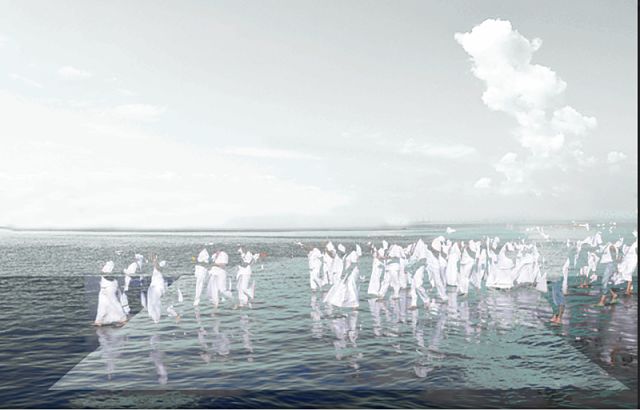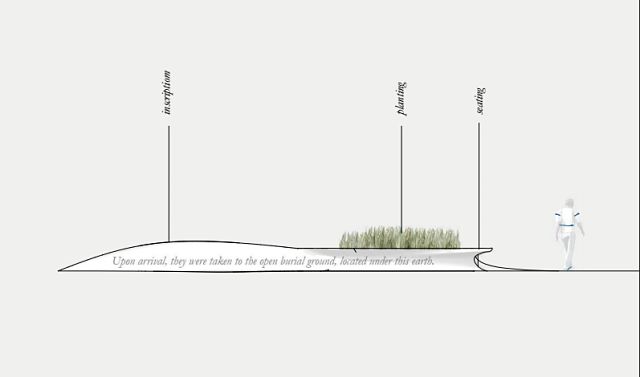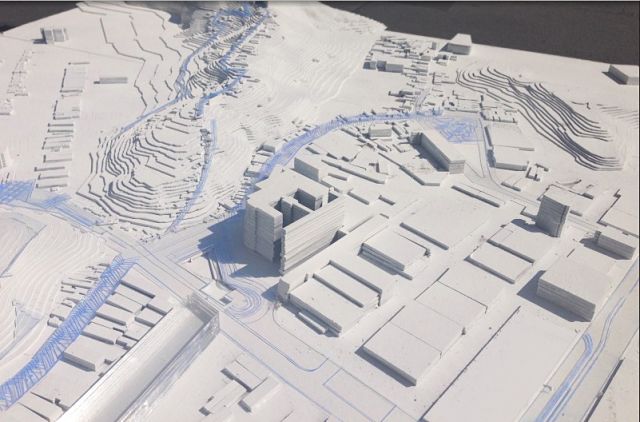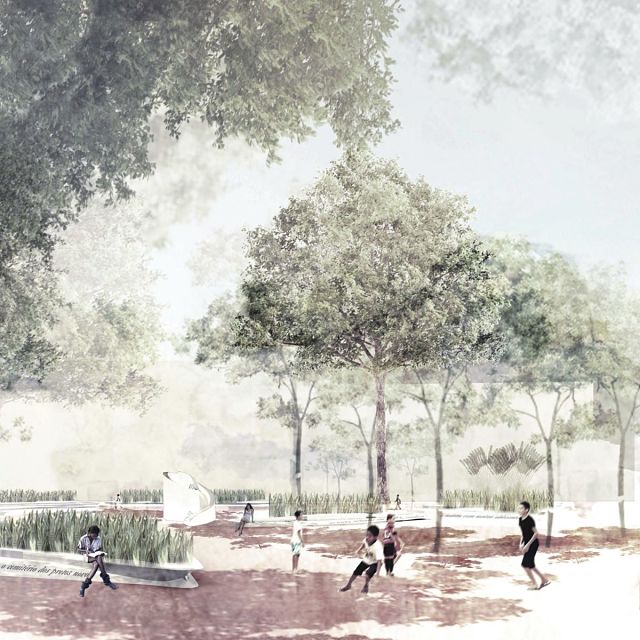Tadias Magazine
By Liben Eabisa
Published: Tuesday, January 26th, 2016
New York (TADIAS) — In the Spring of 2011 Sara Zewde was on her way to Harvard’s Graduate School of Design (GSD) to study landscape architecture when she found herself in the middle of a movement to preserve a historic Afro-Brazilian heritage site in the Pequena África (Little Africa) neighborhood of Rio De Janeiro. Today Sara, who works for a major U.S. architecture firm in Seattle, has the attention of Brazil’s second-largest city as it prepares to complete part of a design proposed by the Ethiopian American landscape architect before the 2016 Summer Olympics commence there in August.
“I was working in Brazil as a transportation trainer and my job was to consult on a specific project in the Pequena África section of Rio,” Sara recalled in a recent interview with Tadias. “And during that time they were conducting some excavation of the streets and they found the ruins of a very infamous slave port.”
In fact the discovery was the biggest slave port in the Americas. “22% of all the slaves brought to the Americas came through Rio de Janeiro” Sara pointed out. As a result “Brazil actually has more black people than any other nation other than Nigeria. It is a very African country.”
According to the Associated Press the discovery of the port named Valongo, “which was excavated as part of a multibillion-dollar project aimed at bringing big business to Rio’s long derelict port neighborhood, has sparked heated discussions about how Black heritage sites are handled in Brazil.”
Sara, whose urban planning Master’s thesis at MIT focused on the relationship between the African Diaspora and architecture was eager to assist. “I basically approached some of the activists on the ground about the topic and they were excited about my participation,” she told Tadias. “And five years later here I am. I ended up getting really involved and proposed a design that they can use.”
Sara’s proposal includes “a promenade around the old wharf, embellished with fluid shapes that echo the ‘rodas’, or circles, where people engage in the traditionally black Brazilian martial art of capoeira and samba music, which was born in the port district,” AP noted describing her vision. “African plants, such as the baobab tree, would evoke the space’s African soul and a concrete “ribbon” inscribed with historical details would guide visitors.”

Sara Zewde’s monument design to memorialize the Valongo Wharf in Rio De Janeiro, Brazil. (Courtesy image)

(Courtesy of Sara Zewde)

Design by Sara Zewde. (Courtesy image)
In an article entitled “Sara Zewde has the Mayor of Rio de Janeiro Paying Attention — And For Good Reason” the non-profit organization Next City noted on their website that “by July 2014, [Sara] was presenting a design proposal at a meeting in Rio’s city hall convened by the Mayor’s office. His representatives and those from the public-private partnership redeveloping the port were there, as well as private developers with a stake in Porto Maravilha, staffers from the federal agencies…and various community activists. Zewde’s audience also included Milton Guran, a Brazilian who serves on UNESCO’s International Scientific Committee and will help decide in the next year whether Valongo Wharf receives designation as a World Heritage Site.”

Sara Zewde’s design, as shown in this rendering, includes native African plants. (Courtesy of Sara Zewde)
What Rio’s leaders “are advocating for now is to build pieces of it before the Olympics,” Sara said. “So there is a huge push, as you can imagine, in terms of infrastructure and construction, just trying to make the city ready for all the visitors.” Some pieces of the design have already been completed, and currently Sara adds that they are “working on a budget and aiming to have at least a quarter mile of the design built before the Olympics.”
Sara, who is 29-years-old, was born in Houston. When she was about a year old her family, who emigrated from Ethiopia, moved to Louisiana where they resided until she was a teen. At the age of 13 her family moved back to Houston and lived there for another five years. “At 18 I moved away and I’ve just been kind of everywhere since then,” Sara said with a slight laugh. In between, she attended Boston University for her undergraduate education and MIT and Harvard for graduate school.
“I grew up in Louisiana where there is not a lot of Ethiopians, especially not 30 years ago,” she shared. “So basically I relied on what my parents told me about Ethiopia. So as a child I had the privilege of growing up with this romantic version of being in Ethiopia.”
The stories that Sara heard from her parents had a positive impact on her profession as an architect. “What that meant for me was that as an architect you need to romanticize, it’s a skill in architecture to be able to romanticize a condition. Your job as an architect is to make something beautiful so it takes a sort of deep understanding of what brings people joy.” She then shared the way her mother, who came from a rural part of Ethiopia called Yifat, told stories of her native home. “She does not talk about it the way people do in the media or books; she talks about it as if it’s all about joy for her.”
Embracing the stories she grew up with Sara ties it back to her focus as an architect. “Understanding people’s life experiences and understanding that joy in relationship to this long-term history, it’s a pretty powerful skill to use with whomever you work with, whatever their history, regardless of their condition,” she said while remembering to add a question: “What is it that brings them joy?”
Sara has traveled to Ethiopia twice — once when she was nine and then a second time ten years ago. “I plan to travel there next year and check it out,” she said. I am excited to see the energy; it seems like there is a lot going on.”
As for her ongoing project in Brazil, “I do the work on the weekends and after work,” Sara said. During the week she is busy at her full-time job at Gustafson Guthrie Nichol, a landscape architecture office in Seattle.
This past Fall her employer’s website proudly highlighted Sara’s work on Rio’s urban monument design, which she presented at the first “Black in Design Conference” organized by her alma mater, Harvard Graduate School of Design (GSD). The feature underlined how Sara had started this project while still a student at GSD and that “she continues to work in partnership with the Rio World Heritage Institute.”
“The firm that I am employed with, they do a lot of really great work,” Sara added. “My friends are working on the building of the National Museum of African American History on the National Mall in Washington, D.C., which is opening this year. They focus on history and culture as an entry point for architecture. That’s why I wanted to work for them.”
—
Related:
Unearthing of Rio slave port sparks debate over black space (AP)
Young American helping Brazil memorialize the slave trade (PRI)
How a 29-Year-Old Designer Is Reinventing the Urban Monument (Next City)
Harvard School of Design: Sara Zewde Named National Olmsted Scholar (GSD)